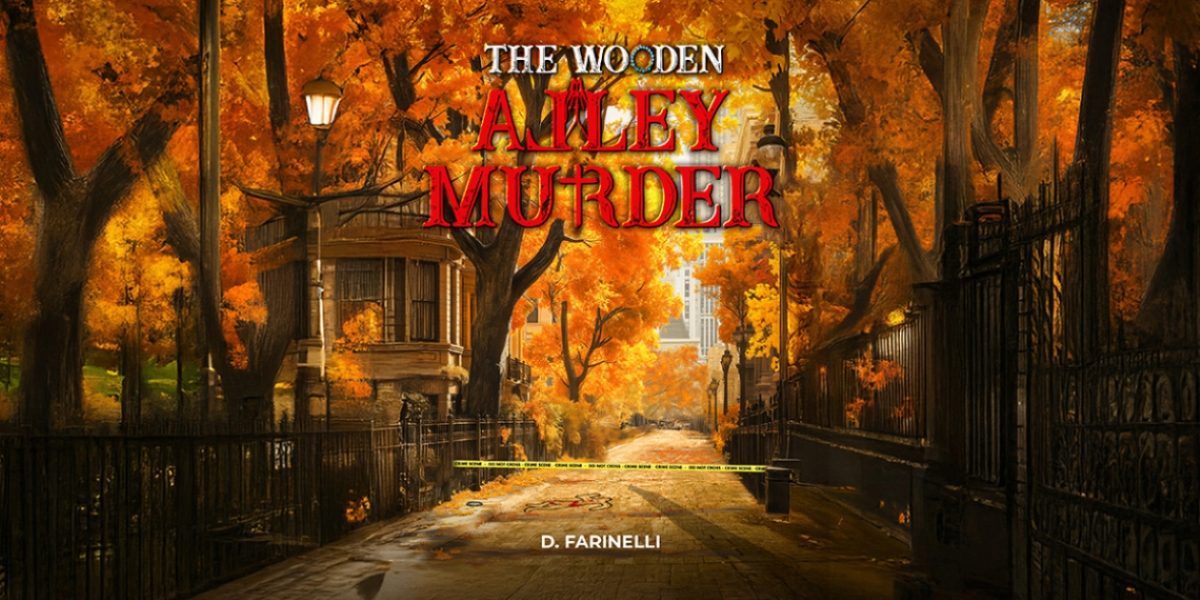By: Lucille P. Wellman
“Trust, once lost, is rarely regained—especially when broken by those who claim to guide others.” This truth lies at the heart of The Wooden Alley Murder by Denise, a novel that dismantles illusions and exposes the corruption lurking behind polished exteriors. While the story begins with a shocking crime, it is far more than a murder mystery. D.Farinelli crafts a haunting exploration of how secrets shape destinies, how power manipulates, and how the line between justice and vengeance blurs beyond recognition.
The novel opens in the early hours of the morning as Margaux, a woman bound by wealth but emotionally detached from her life, takes her usual run with her dog, Caesar. What she finds in a dark alley is horrifying, but Margaux is not the focus of this story—her role is fleeting, a mere spark that sets the real narrative in motion.
At the heart of The Wooden Alley Murder is a man whose identity is a carefully constructed illusion. He is not what he appears to be, and his death is not just a crime—it is a reckoning. As the layers peel away, the novel refuses to reduce the central figure to a simple villain or victim. Instead, it forces readers to grapple with uncomfortable questions: Who controls the truth? How much of what we believe is simply a well-worn disguise?
- Farinelli does not frame this as an attack on faith or morality but rather as an unflinching look at those who weaponize trust for their own ends. The victim—who once held power, influence, and reverence—is not what he pretended to be.
As the investigation unfolds, Ceci and Avery Felcetti, a couple struggling with their own fractures, are pulled into the chaos. Avery, a former bestselling author now drowning in self-doubt, is drawn to the case as if solving it could restore his sense of purpose. Ceci, whose sharp instincts refuse to let go of an unfinished story, sees the crime not just as a mystery to solve but as a reflection of the very deceptions people tell themselves. Their journey is not just about uncovering what happened—it is about confronting what they have ignored for too long.
While the novel explores themes of power, deception, and justice, it never simplifies them. The true danger in The Wooden Alley Murder is not faith, wealth, or status but the ease with which people accept appearances without question. The novel’s most unsettling moments come not from violence but from silence—the quiet complicity that allows deception to flourish. Those who should have seen the truth looked away. Those who knew more than they admitted chose secrecy over exposure.
Set against the backdrop of Chicago’s Gold Coast, where privilege masks decay, The Wooden Alley Murder uses its setting as more than just scenery. The wooden alley where the body is discovered is a stark reminder that beneath the grandeur of the city’s elite, darker forces thrive. The alleys and corridors of power are where the real games are played, where reputation matters more than reality.
But The Wooden Alley Murder does not simply critique the elite. It also examines how ordinary people—like Ceci and Avery—build their own facades. Their struggle is not just with the crime at hand but with the quiet dishonesty in their own relationship. What happens when the lies we tell ourselves start to unravel?
Denise refuses to offer easy answers. The Wooden Alley Murder lingers long after the final page, asking readers to question their own assumptions about truth, morality, and justice. In a world where the past is rewritten to protect the present, this novel challenges us to ask: When the mask finally falls, what remains?
For those drawn to stories that dare to confront uncomfortable truths, The Wooden Alley Murder is waiting. Step into its world of shifting identities, whispered betrayals, and the question that haunts every page: How much of what we believe is real?
Published by Joseph T.

















